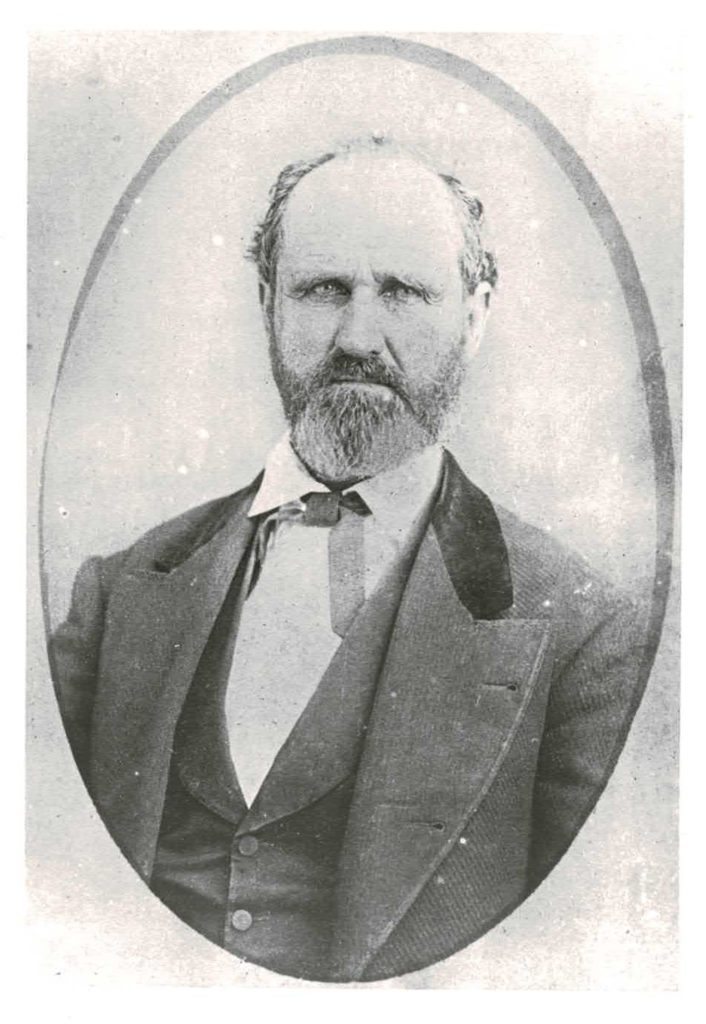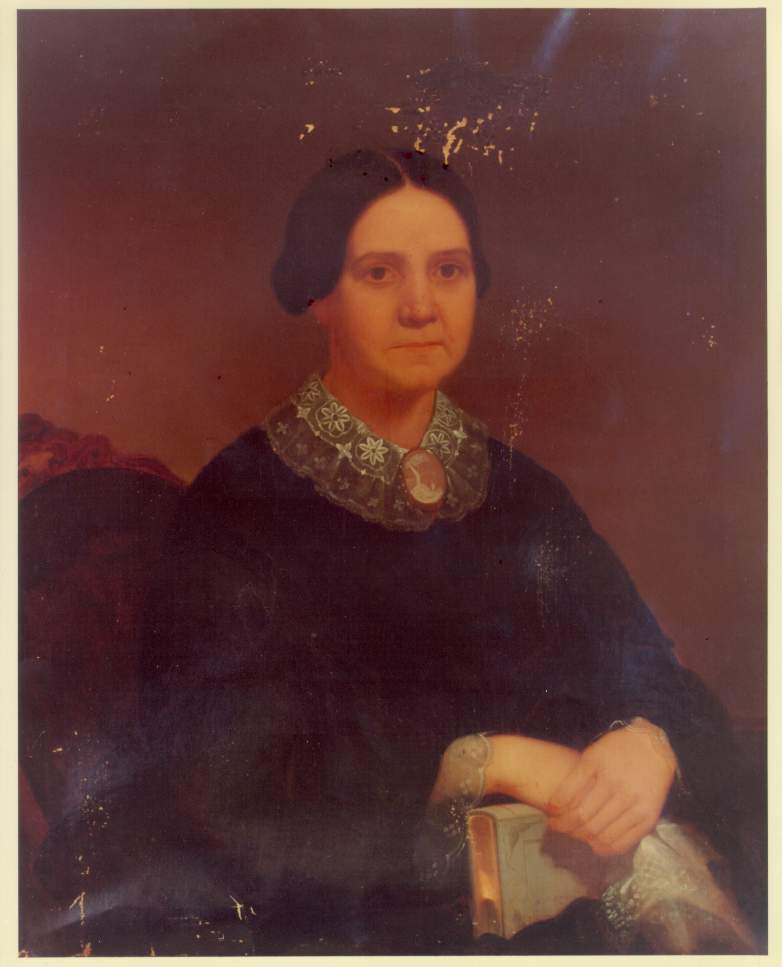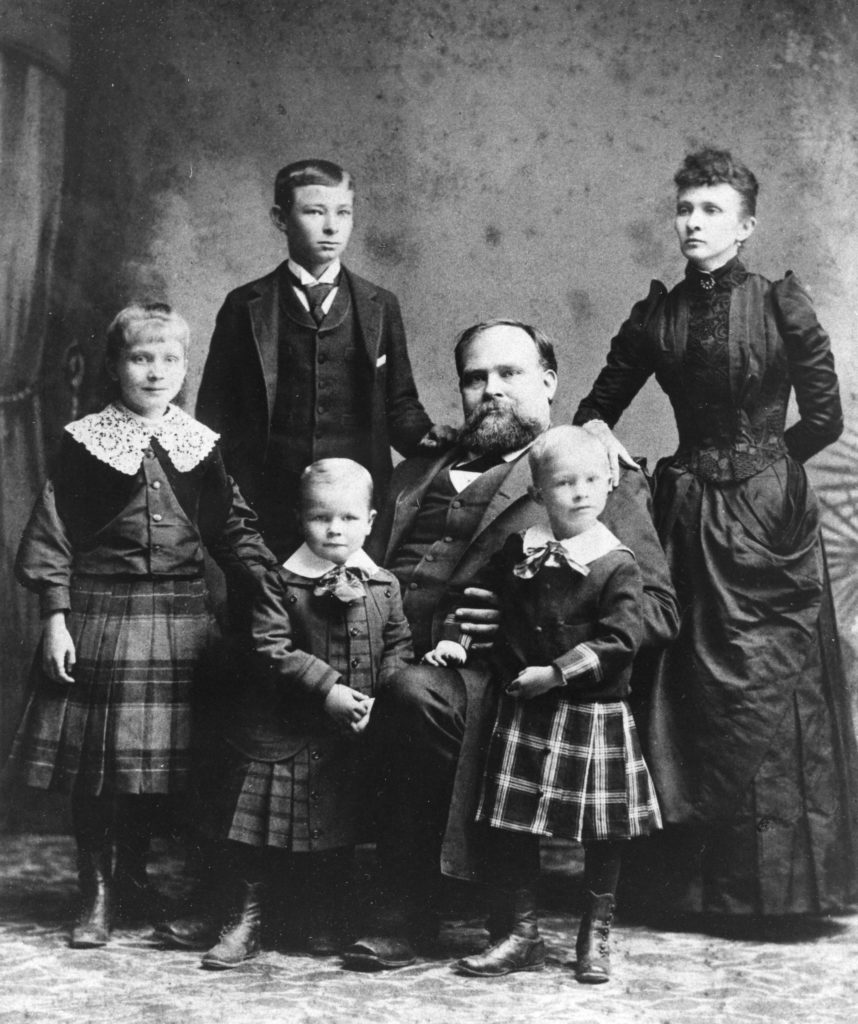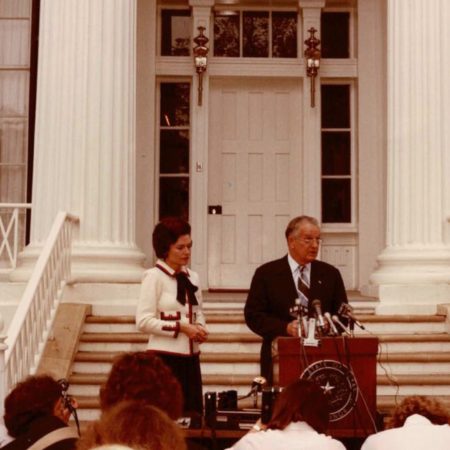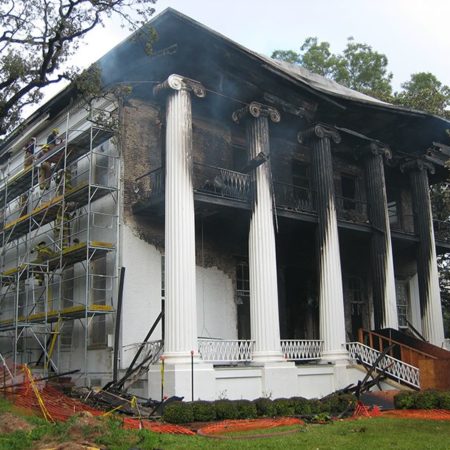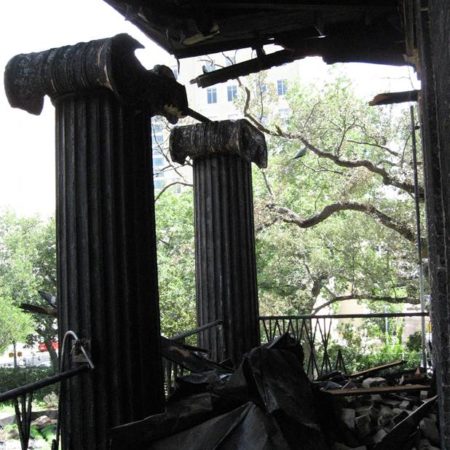The Governor’s Mansion, the most historic house in Texas, sits on a beautifully landscaped city block in Austin near the Capitol building. Built in 1856, it is the oldest continuously occupied executive residence west of the Mississippi. The building has been designated a National Historic Landmark.
After independence from Mexico in 1836, the location of Texas’ capital changed frequently in the early years, making it difficult to provide permanent housing for its chief executive. The best attempt came in 1842 during the Republic, when a large “President’s House” was constructed in Austin. Like other early wooden buildings in Austin, it soon fell into ruin and was torn down. However, some of the furnishings were saved and placed in the Governor’s Mansion after that building was completed.
Texas became a state in 1845, but not until 1854 did the Legislature appropriate $14,500 for construction of a “suitable residence” for the Governor of Texas. The contract was awarded to Austin master builder Abner Cook, who adapted the popular Greek Revival style of architecture to the frontier. Cook was a diversified businessman. He owned a clay pit on the Colorado River, which produced the buff-colored bricks used in the Mansion and had an interest in the Bastrop sawmill which supplied the lumber.
The design for the house included a deep veranda, floor-length windows and wide hallways to provide cooling ventilation in summer, features that Cook used in many houses he constructed for prominent Austinites. The “X-and-Stick” balustrades on the porch were his trademark. The square plan of the structure placed four main rooms on each floor, two on either side of a broad central hall. A rear wing held a kitchen and servant’s quarters. This simple two story design was impressively proportioned; twenty-nine foot Ionic columns across the front spanned ceiling heights of sixteen feet downstairs and thirteen feet upstairs.
The house was completed on June 14, 1856–six months later than specified in the contract. During that time, the builder had to pay the Governor’s rent in a boarding house. Texas’ fifth Governor, Elisha Marshall Pease, his wife, Lucadia, and their daughters became the Mansion’s first residents. Obtaining appropriate furnishings in the remote capital was very difficult, and Mrs. Pease was appalled by the cost of furniture. The Legislature’s $2,500 appropriation did not go very far, so the Peases made the house more comfortable by using their own furniture. Even then, some of the bedrooms remained unfurnished, and difficulty in maintaining the great house plagued every Governor for more than a century.
Sam Houston, frontier legend and hero of the Texas Revolution, was elected Governor in 1859. Because of the Mansion’s sparse furnishings, Houston ordered the massive mahogany four-poster bed, which is now located in the southeast bedroom. Temple Lea Houston, Sam and Margaret’s eighth child, became the first baby born in that bed and in the Mansion. He was the final addition to a mischievous troupe of siblings. Five year old Andrew Jackson Houston once locked members of the Legislature in their chamber and hid the key. Threats of a whipping had no effect, and only when Governor Houston threatened to have him arrested was the key produced. (Houston admitted, however, that his son had done a better job of controlling the Legislature than the Governor himself!)
Other first families were equally rambunctious. James Stephen Hogg, the first native born Texas governor, took office in 1891. Hogg’s four children, when not occupied by their collection of dogs, cats, squirrels, raccoons and exotic birds, could be found indoors sliding down the sweeping stair rail. After his youngest son fell off, an exasperated Governor Hogg hammered tacks down the banister and ended the fun. Visitors may still inspect the filled nail holes.
In 1901, Texas First Lady Orline Sayers redecorated the Mansion in late Victorian style–fancy parlor furniture set amid a forest of potted plants– to receive Texas’ first Presidential visitor, William McKinley and members of his cabinet. Anger over the Civil War still ran high in Texas, and Governor Joseph D. Sayers, a Confederate veteran, and President McKinley, a former Union officer, set an example of reconciliation during an elegant state dinner in the Mansion dining room.
By 1914 the Mansion stood in dire need of repair. During the term of Governor Oscar Colquitt, the original kitchen wing was demolished to make room for an addition to the back of the main house. This included a new family dining room on the main floor and additional living space upstairs. A new enlarged kitchen wing was then built; this completed the Mansion’s basic floor plan which remains today. The grounds went through many changes until the l960s when First Lady Nellie Connally guided the landscaping of the formal gardens still in use.
By 1979 the Mansion had served Texas’ governors for more than 120 years. With the support of Governor and Mrs. William P. Clements, the Legislature appropriated $1 million for a complete structural restoration. The Friends of the Governor’s Mansion, a non-profit organization, raised an additional $3 million in private donations to refurbish the interiors. By 1982 the house was thoroughly repaired and furnished with an outstanding collection of 19th century American antiques.
In 2008, an arsonist set fire to the building while the Mansion was unoccupied and empty for extensive deferred maintenance. It took four years, and millions of dollars from the state and private donations to restore the Mansion to resume its function as the home of the Texas governors. In the summer of 2012, the collections returned to their places in the historic rooms and the First Family moved back into the home.
Today, visitors to the Mansion may view an important collection of portraits and furniture, including Stephen F. Austin’s writing desk and the sofa donated to the Mansion by descendants of Governor Pease. Also on display is the Governor’s Memento Collection developed in the l960s by First Lady Jean Houston Daniel, a descendant of Sam Houston and the wife of Governor Price Daniel. These heirlooms were presented to the Texas Governor’s Mansion on behalf of every First Family to have lived in the house.
-
Abner Cook, circa 1870
Image Courtesy: PICB01890, Austin History Center, Austin Public Library
- Elisha Marshall Pease
- Lucadia Pease
-
The Hogg Family, circa 1894
James Stephen Hogg Papers, di_01436, The Dolph Briscoe Center for American History, The University of Texas at Austin
-
First Lady Merle O’Daniel in State Dining Room
Image Courtesy: PICA06596, Austin History Center, Austin Public Library
-
Governor and Mrs. William P. Clements officially reopened the Mansion with a press conference and tour on April 1, 1982
Image Courtesy: Texas State Library and Archives Commission, 1982/313-9
-
The Mansion shortly after the fire
Image Courtesy: State Preservation Board
-
Upstairs balcony after the fire
Image Courtesy: State Preservation Board

